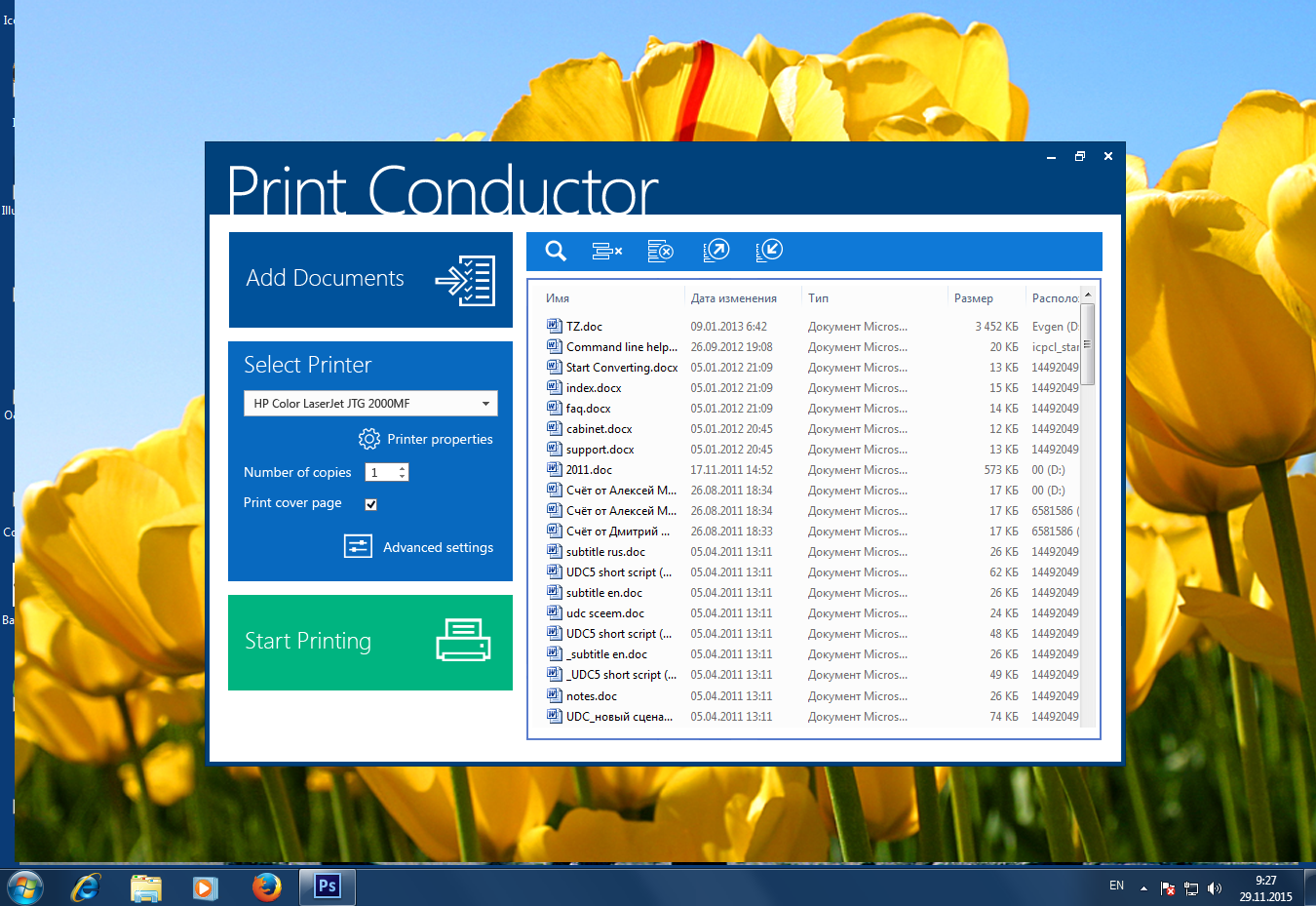

It is compatible with all the latest versions of Microsoft Windows. Document lists can be saved to file for subsequent reuse.ġ23cubesPrint Conductor has a simple and intuitive interface. Sort documents by file name or type, preview them before printing, and/or print a subset of the documents in the list. You can convert list of documents to PDF, TIFF or JPEG in case if you use Print Conductor together with virtual printer software like Universal Document Converter.Īdd documents to a list using drag & drop, the “Open file” dialog, or automatically scan a selected folder and its subfolders for specific documents types.

Additionally, the user can adjust the settings of the selected printer. Printers-icons-140Print Conductor can print documents on any type of printer: local printers, network printers or virtual printers. After processing the entire list of documents, the program produces a detailed job report. Any documents that failed to print are also reported to the user. See full list of supported formats here.Īt each moment the user knows how many documents have already been printed and how many remain in the queue. Source DocumentsSupports printing of Adobe ® PDF files, Microsoft ® Word DOC and DOCX documents, Excel XLS and XLSX spreadsheets, PowerPoint PPT and PPTX presentations, Visio VSD drawings, Publisher PUB files, Autodesk AutoCAD ® DXF and DWG drawings, OpenOffice ODT documents, JPEG, TIFF, GIF, PNG, PCX, TGA, DCX and BMP images, XPS, SVG, TXT, WRI, RTF and HTML files. It is simple and essential for all your printing needs. Print Conductor can print large volumes of PDF files, Microsoft Office files: Word, Excel, Visio, PowerPoint, Publisher, Autodesk AutoCAD, text files, images and many other file types. If you regularly have to open and print a large number of files, this elegant tool can be a real time saver. Print Conductor is a smart solution to print multiple documents and images at a time.

numElements = numProcesses #total elements in list created by conductor process # however, the list can contain lists, like this list of 3-element lists, # for example this list of four 3-element lists: #, ,, ] if id = 0 : data = genListOfLists ( numElements ) print ( "Conductor "\ Get_processor_name () #machine name running the code # in mpi4py, the lowercase scatter method only works on lists whose size # is the total number of processes. Get_size () #total number of processes running myHostName = MPI. Get_rank () #number of the process running the code numProcesses = comm. def genListOfLists ( numElements ): data = * 3 for i in range ( numElements )] for i in range ( numElements ): #make small lists of 3 distinct elements smallerList = for j in range ( 1, 4 ): smallerList = smallerList + # place the small list in the larger list data = smallerList return data def main (): comm = MPI. From mpi4py import MPI # Create a list of lists to be scattered.


 0 kommentar(er)
0 kommentar(er)
